Gardening has lingo. Some of the terminology surrounding seeds, seed starting, and growing is pretty intuitive and some is more obscure or weird. But it helps to understand these seed-related terms if you want to navigate a seed catalog, ask accurate questions, look things up, or just sound like you know what you’re talking about.
I’ve put all the seed terminology I could think of together, all in one place. If you see any glaring omissions, let me know in the comments.
Quick links to the sub-categories:
- What’s In A Name: botanical nomenclature, variety vs cultivar and more
- How Long They Live: Annual, tender perennial and more
- How A Seed’s Parents Got It On: open pollinated, hybrid, GMO and more
- What The Seed Is Like: pelleted, treated and more
- Timing The Planting: first frost, last frost, days to maturity
- Germination Terms: minimum germination standard, cotyledon and more
- Planting Terms: direct sow, seed starting, harden off and more
- Short vs Tall: How They Develop and Grow: bush vs pole, determinate vs indeterminate and more
- Certifications, Awards, etc.: certified organic, non-GMO verified and more
What’s In A Name?
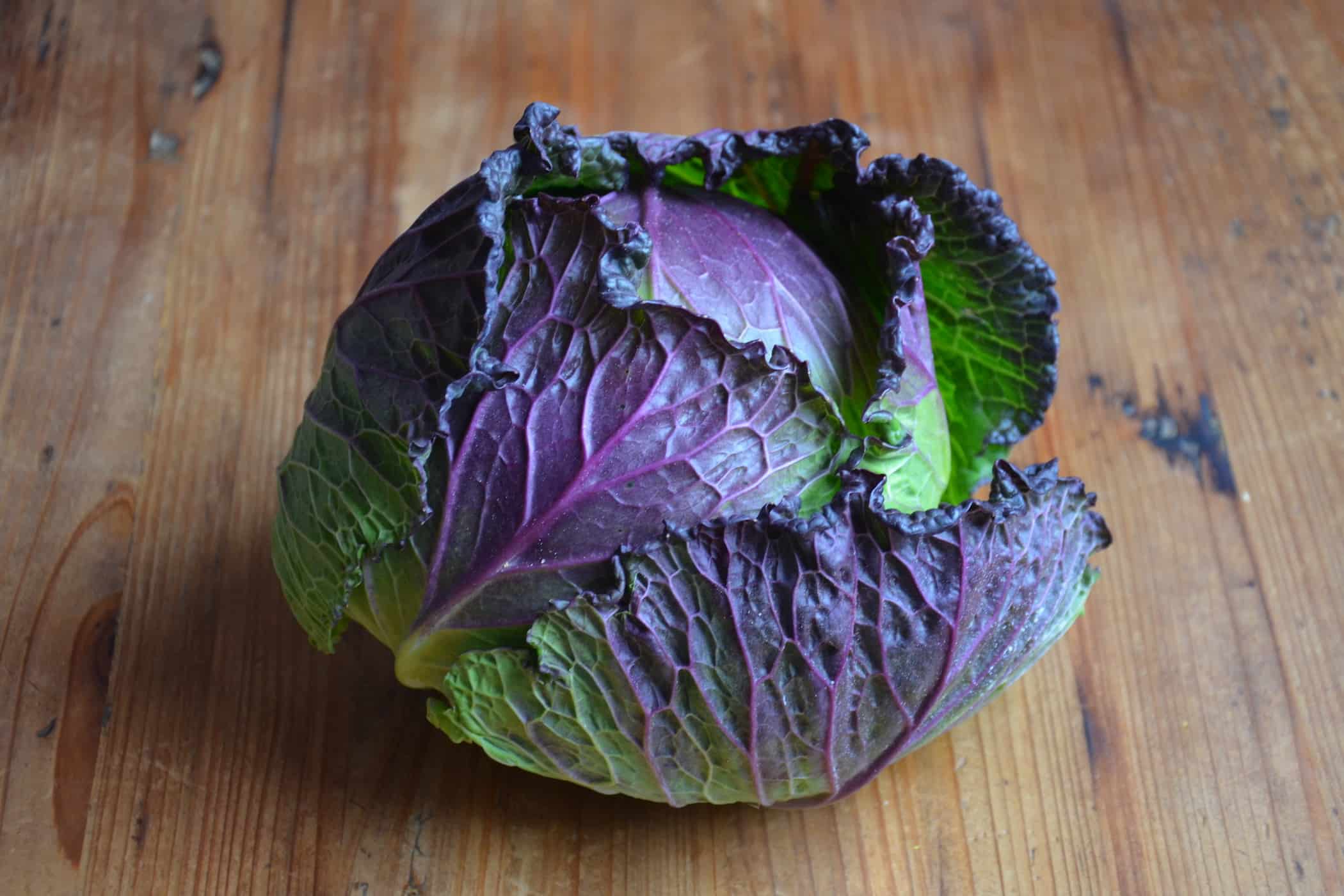
January King Cabbage. Image: Wikipedia
Common Name: The everyday-language name of a plant, as opposed to the botanical name. Common names of plants can differ from location to location, and so for many plants are not a perfectly reliable way to specifically identify a plant. For example, one common name for the particularly cold tolerant savoy cabbage pictured above is January King Cabbage.
Botanical Name: Also called the Scientific Name or Latin Name, this is the official scientific name for a specific plant (or algae or fungi). The botanical name includes the genus and species, and can contain additional information about the cultivar or cultivar group of the plant. The botanical name for January King Cabbage, for example, is Brassica oleracea (Sabauda Group) ‘January King.’ In this example, Brassica is the genus, oleracea is the species, and Sabauda is the cultivar group that includes all savoy cabbages. ‘January King’ is the specific cultivar.
Variety: A stable, naturally occurring variation of a population of plants within a species. Variety traits are passed on consistently to plant offspring without outside interference.
Cultivar: The cultivated variety (get it? the “culti-var”?) of a plant. Although lots of non-horticulturalist people, myself included, use the term variety and cultivar pretty interchangeably, if the specific strain of plant requires human help to keep it pure and consistent, it’s a cultivar, not a variety. This means pretty much all named vegetable are technically cultivars, not varieties.
Cultivar Group: Some vegetable types are categorized into a broader “Cultivar Group” to separate them from other plants with the same genus and species. For example, all cabbages, broccoli, cauliflower, kale, Brussels sprouts, collard greens, kohlrabi, and gai lan are Brassica oleracea. That’s a crowded family! To help clarify, each major vegetable type gets it’s own cultivar group name. Head cabbage is B. oleracea Capitata Group, cauliflower is B. oleracea Botrytis Group, kohlrabi is B. oleracea Gongylodes Group and so on.
Big thanks to my friend Grace Hensley of Grace Hensley Horticulture who double checked my botanical nomenclature for this section. Any errors are mine alone.
How Long They Live
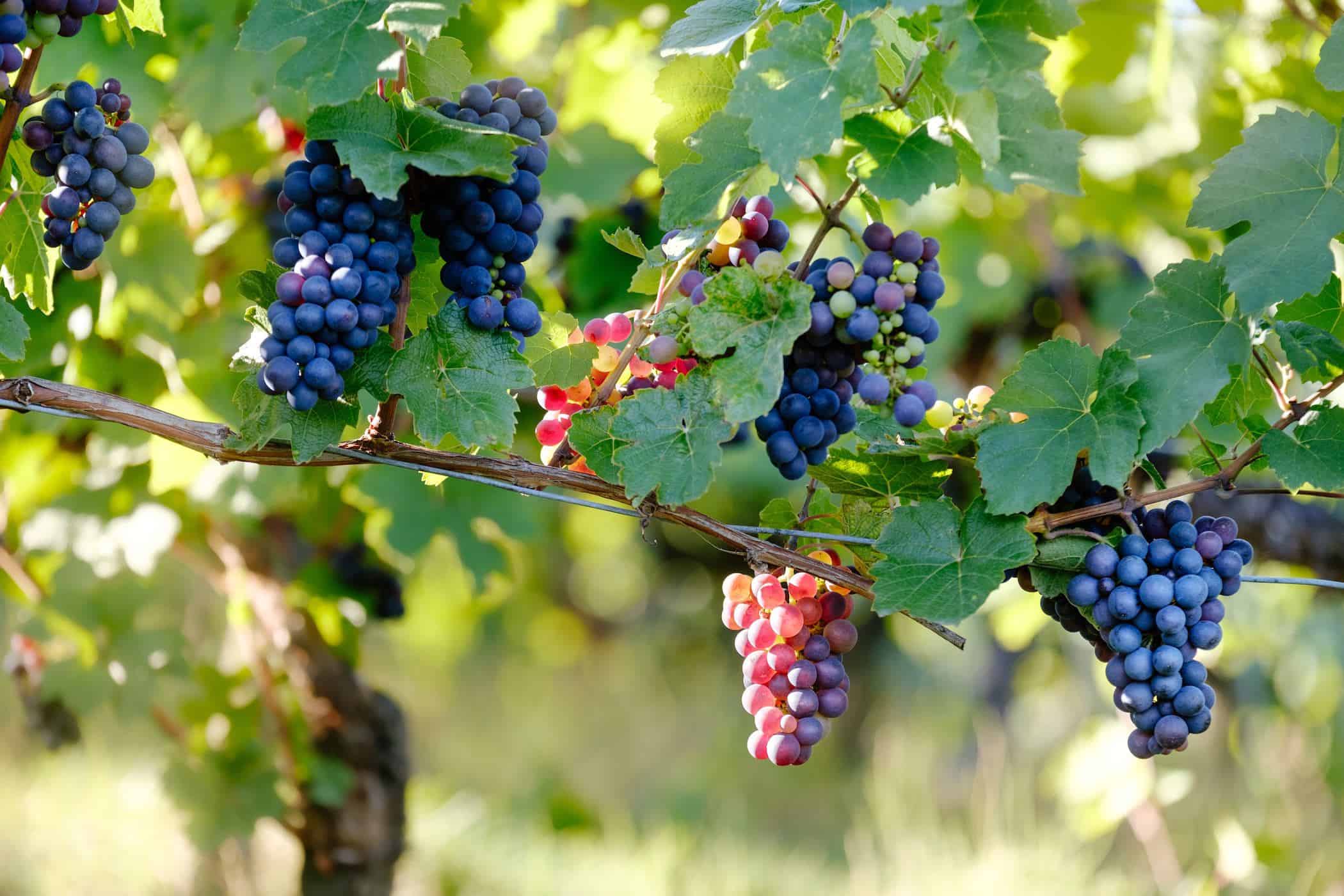
Grapes are a long-lived perennial.
Annual: a plant that germinates, blooms, produces seed, and dies in one growing season. Many vegetables, including beans, cucumber and zucchini are annuals.
Biennial: a plant that germinates, grows, overwinters, and then produces seed the second growing season. Most brassica-family vegetables and many root vegetables such as carrot are biennial – the first season they store energy in the taproot, the second season they use that energy to rapidly make seeds in the spring.
Perennial: A plant that will live more than two years, and often many, many years, without dying off. Fruit trees, asparagus, grape vines and blueberry bushes are all examples of perennials.
Short Lived Perennial: a plant that lives more than two years, but tends to die off after several years even in favorable conditions. Artichokes are short lived perennials.
Tender Perennial: a perennial or short lived perennial that will die out when exposed to sufficiently cold winter weather. Peppers are a tender perennial.
Treat as Annual: a perennial or short lived perennial that will not survive local weather conditions, and so is allowed to die at the end of one growing season and started again from seed the next growing season. Tomatoes are treated as an annual in most places in the United States.
How A Seed’s Parents Got It On
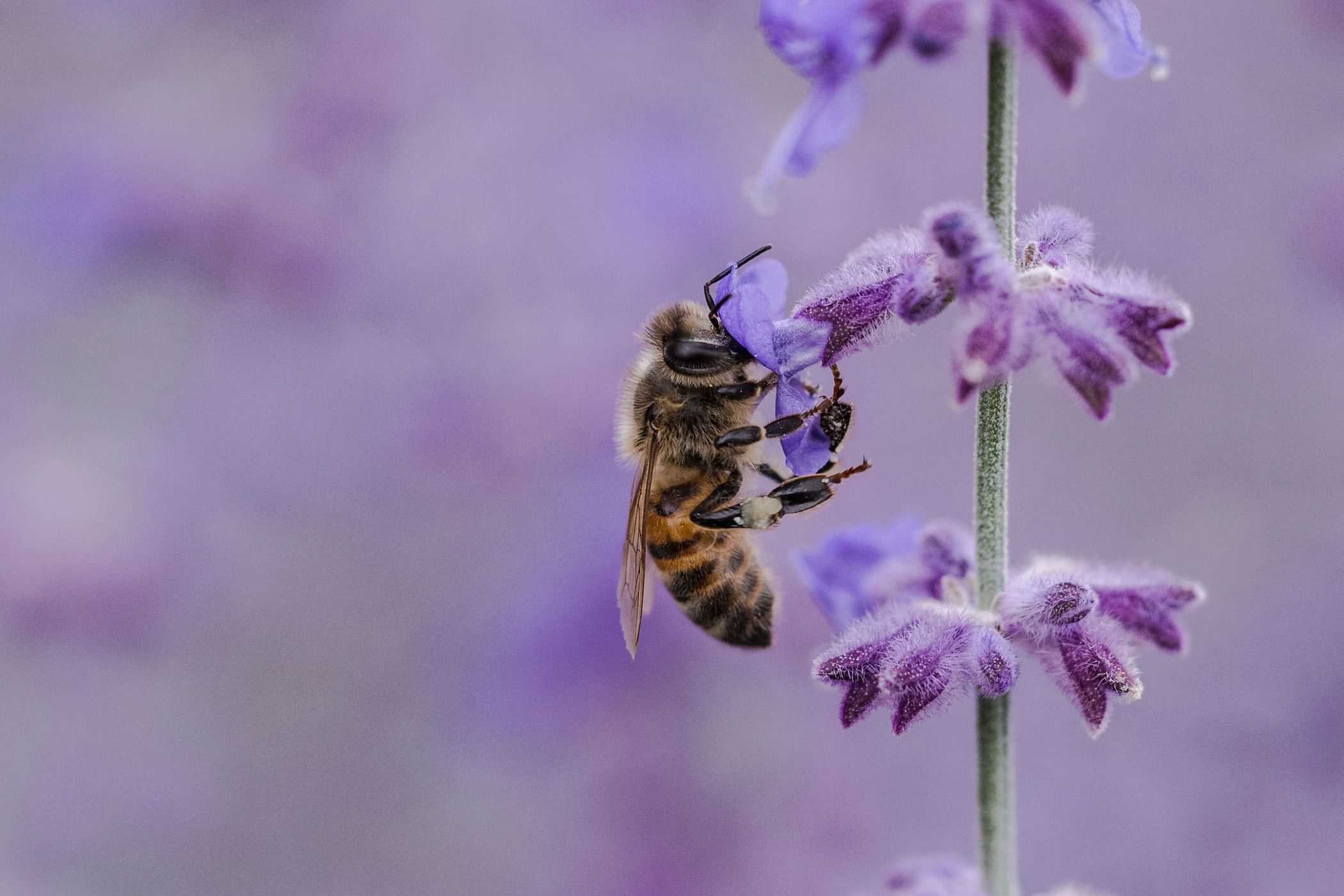
Many open pollinated plants rely on insect pollination.
Open Pollinated: Seed grown from plant varieties which self-pollinate or which cross-pollinate via wind, insects, or other natural forces. With appropriate care (and, in many cases, varietal isolation) open pollinated plants make seeds which will grow into plants that are substantially similar to the parent plant. For this reason, open pollinated plants are preferred by gardeners who save their own seed.
Hybrid: Seeds grown by carefully crossing two different, highly inbred lines of parent plants with different desirable characteristics. Plants grown from hybrid seeds are highly uniform and often show “hybrid vigor,” or improved growth traits and reliability. Hybrid seed is typically more expensive than open pollinated seeds. It does not reliably “breed true” without extensive work to stabilize it over many generations, and so and so is not considered useful for backyard seed saving.
GMO (Genetically Modified Organism): Seeds that have been altered using various genetic engineering techniques. Transgenic GMO seeds contain genetic material from an unrelated organism. For example, Bt corn has been modified to grow proteins from the Bacillus thuringiensis bacterium in order to make the corn resistant to caterpillar-type pests.
Genetically modified seed is not available to the home gardener, however it is possible for home gardeners to buy traditionally bred seed grown by companies which also sell genetically modified seeds to commercial growers. It is also possible (though not likely) for non-GMO seed of certain vegetables to become contaminated with the genetics of a GMO counterpart. Corn, beets and chard are the garden vegetables most at risk from this kind of contamination.
Heirloom: A recognized, open-pollinated cultivar with a long heritage. There isn’t one agreed upon definition of “heirloom” but typically these cultivars originated before the end of World War II. Bred to meet the needs of families or small communities, many heirlooms have been passed down for generations. Today heirlooms are appreciated by those who particularly value seed diversity and heritage, or who enjoy the flavor or other characteristics of heirloom cultivars.
(Read more about this: Plant Sex: Open Pollinated, Hybrid and GMO Seeds)
What The Seed Is Like
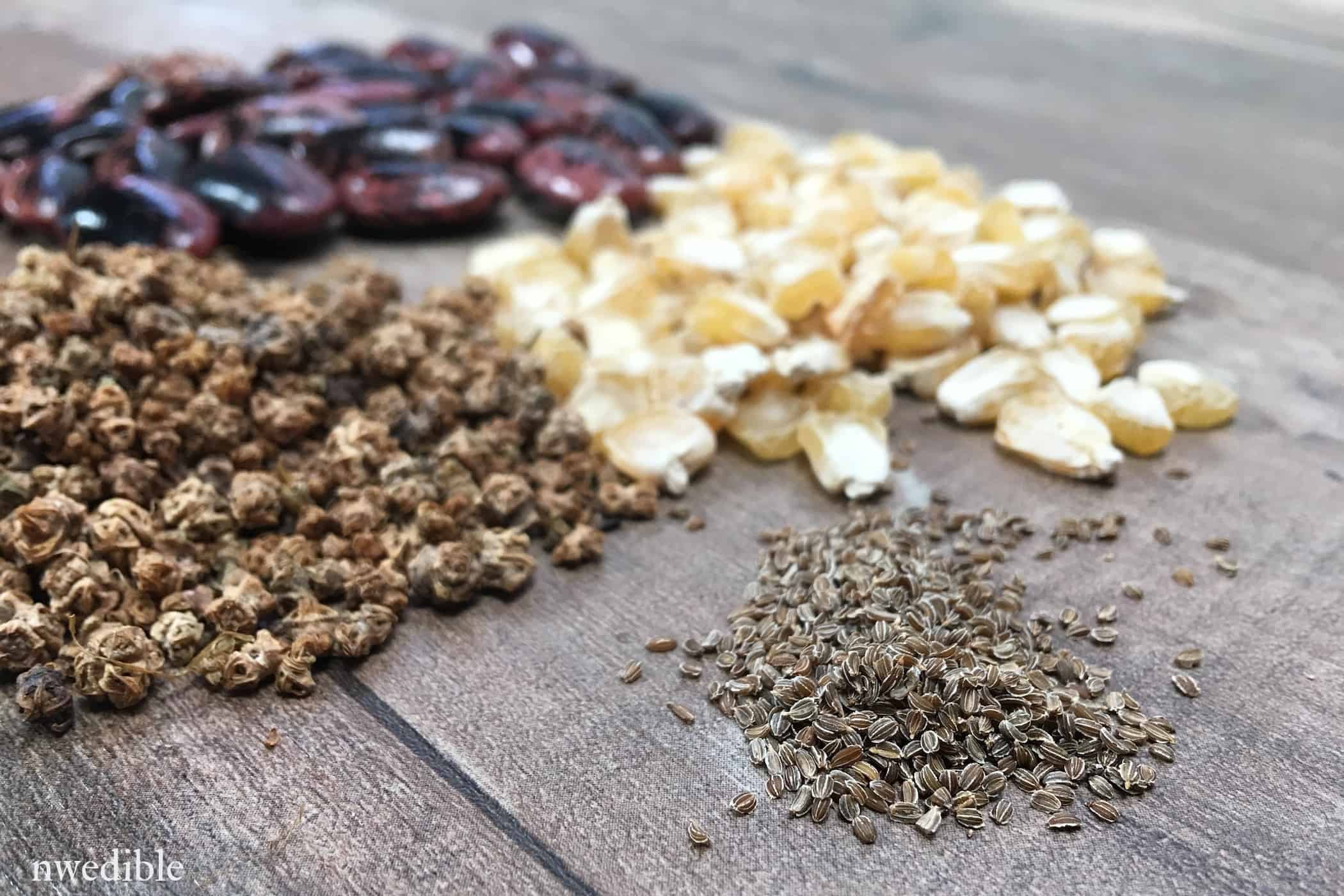
Tiny seeds, like these carrot seeds, are sometimes sold pelleted.
Pelleted: Seeds that are coated with clay to make them round and easier to handle and plant by hand or machine. Small, irregular seeds like carrot are among the most commonly pelleted. Pelleted seeds have a shorter shelf life than non-pelleted seeds and should be used the same year they are purchased.
Treated: Typically this refers to seed that is coated with fungicide to make the seed less likely to succumb to soil pathogens during germination. More broadly, any seed that has undergone any treatment (including hot water processing) to help protect the seed from seed or soil-borne pathogens.
Untreated: Seed that has not undergone any processing or coating. Just, you know, seed.
Requires Light: Some seeds will germinate far better if exposed to light. The only common vegetable seed I know of in this category is lettuce, but many flower seeds require light for strong germination.
Requires Stratification: Seed which must undergo processing to re-create the conditions the seed would naturally undergo before germination. Typically, this means simulating a winter dormancy period by exposing seeds to cold and moist conditions for some period of time. This is typically not necessary for garden vegetable seeds.
Requires Scarification: Seeds which must have their very hard outer layer damaged in a controlled way before germination will occur. Typically this involves scratching, sanding, or nicking the seed coat, or treating the seed with a dilute acid or alkaline solution to simulate damage to the seed coat which would occur naturally in the digestive tract of an animal. This is typically not necessary for garden vegetable seeds.
Requires Vernalization: Exposing germinated seeds, seedlings or plants to low temperatures in order to stimulate same-year or early flowering and crop production. In the garden, artichokes grown as annuals in cold-winter areas can be induced to flower and produce a crop earlier if the young seedlings undergo vernalization.
Timing The Planting
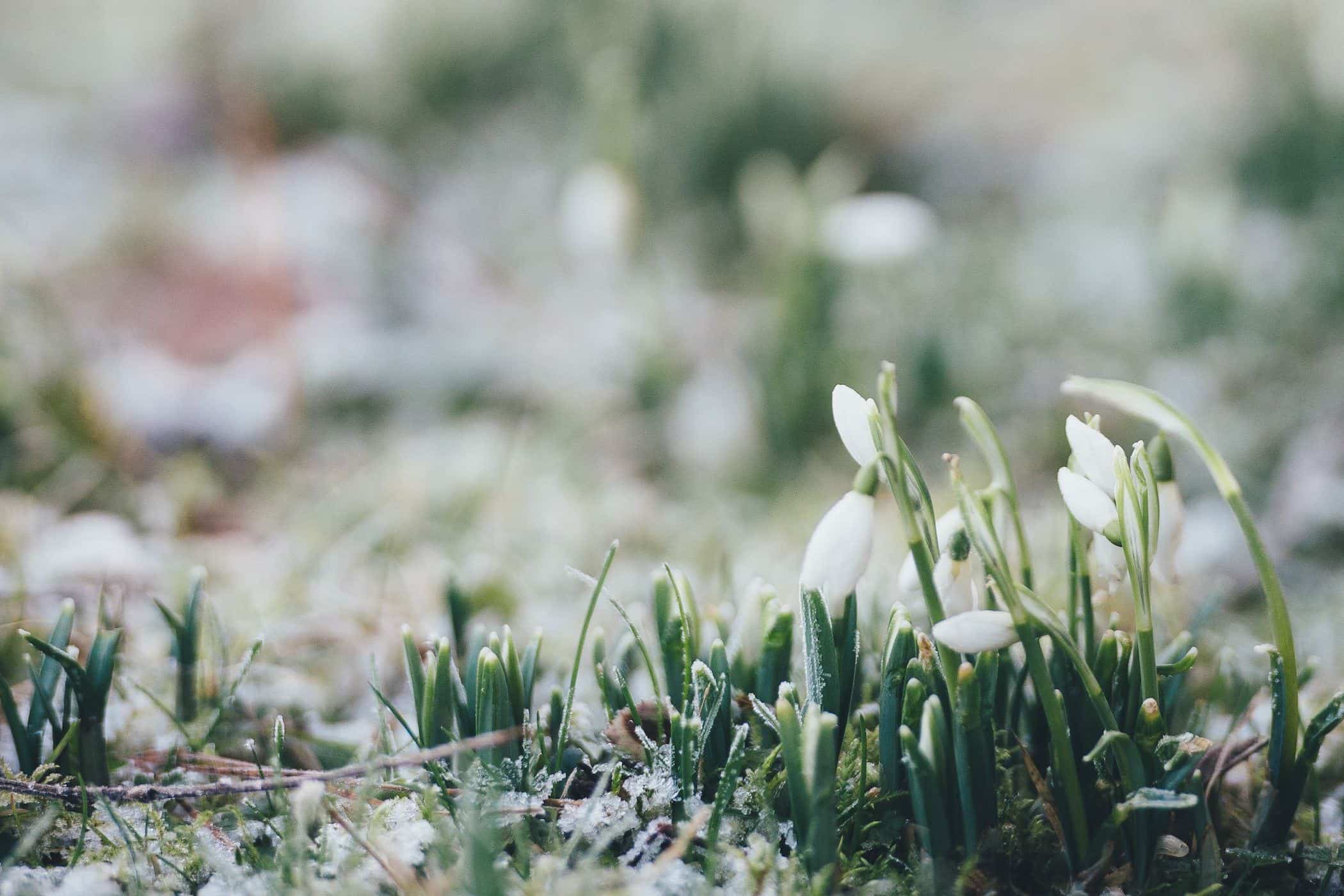
Some early spring perennials can show up right around the last frost date.
Last Frost Date: The day of the year (in most locations, this is sometime in late winter or spring) when it can reasonably be expected that the air temperature will no longer drop below the freezing point of water. Many seed starting calculators are based on sowing or planting a certain number of weeks after the last frost date. In mild-winter regions including the Pacific Northwest, last frost-based planting calculations can be of limited use.
First Frost Date: The day of the year (in most locations, this is sometime in fall) when it can reasonably be expected that the air temperature will first fall below the freezing point of water. Fall garden seed starting calculators often calculate dates of sowing or planting based on number of weeks before the first frost date. In mild-winter regions including the Pacific Northwest, first frost-based planting calculations can be of limited use.
Days to Maturity: Also called Days to Harvest. The theoretical number of days it takes a plant to mature to harvestable size. This number is highly variable based on the growing environment of the plant. Time of year, heat units, day length, solar intensity, soil fertility, soil texture, moisture stress, pest and disease stress, weed competition, crowding, age of seed at time of planting and a zillion other variables will impact the actual number of days a plant takes to grow and mature. Many seed catalogs list Days to Maturity from time of transplant for vegetables that are not typically direct seeded, such as tomatoes or eggplant. Generally, the closer a seed house is to your garden, the more reliable the Days to Maturity listing will be, but even then it’s best to use this figure to compare different cultivars of a vegetable.
Germination Terms
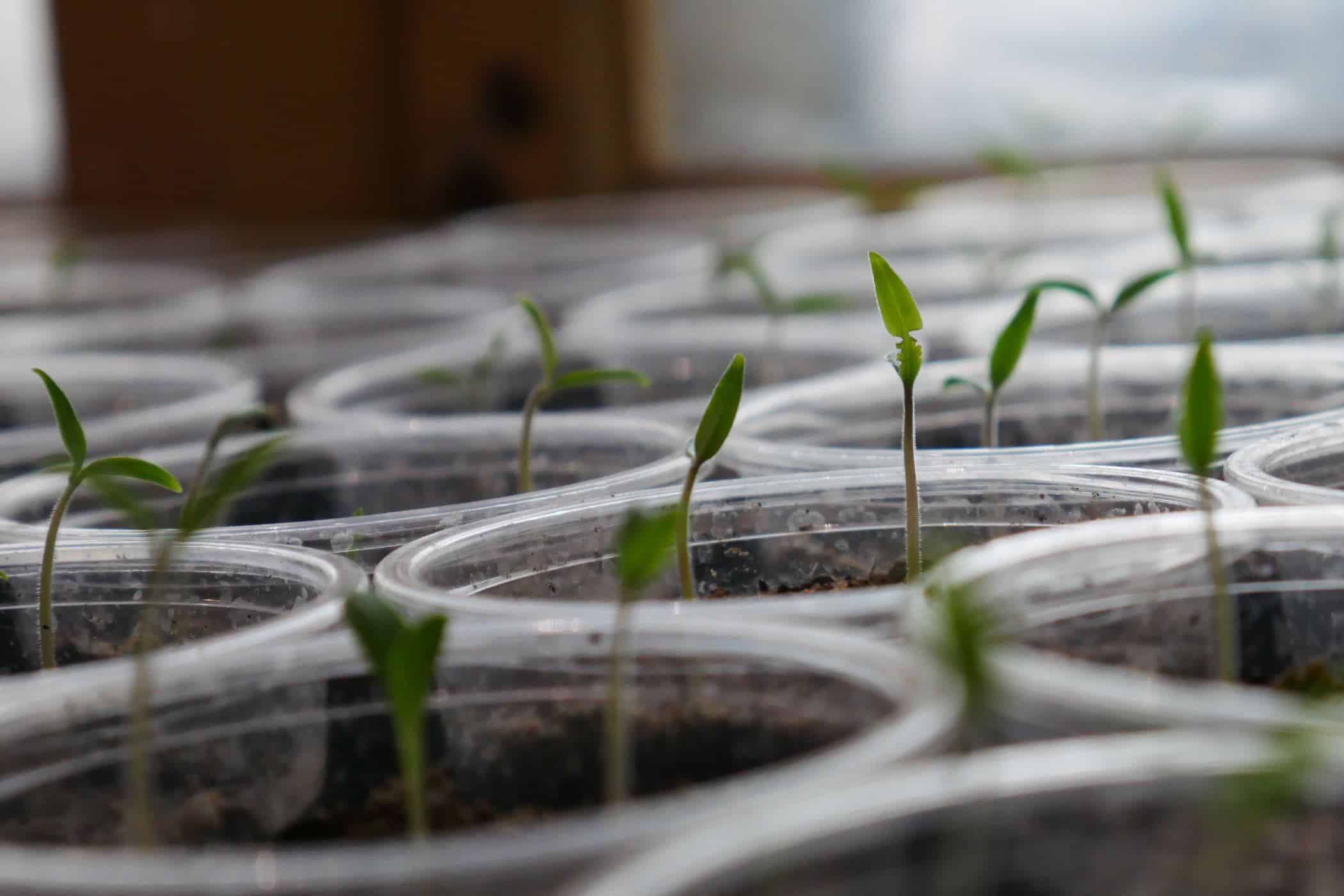
The cotyledons of a seedling often look very different than the true leaves.
Germination: The process by which a seed first initiates growth. Typically the seed absorbs moisture, softens, swells, and undergoes enzymatic changes. A tiny first root snakes out of the seed and down into the soil, followed by a shoot which unfurls up towards light.
Minimum Germination Standard: In the United States, the legal rate of germination, expressed as a percentage, that a batch of seed must achieve in order to be commercially sold. For example, the legal minimum germination standard for cabbage seed is 75%. Good independant seed houses maintain their own in-house minimum germination standards which in some cases are substantially higher than the federal legal minimum. (Read more: How And Why To Do A Seed Germination Test)
Usual Seed Life: The length, measured in years, that a seed will maintain reasonable viability. Some seeds, like parsnips and onions, are notorious for losing viability quickly and have a usual seed life of only one year. The brassica family seeds and tomato seeds, in contrast, are often for viable for four or five years. Seed storage plays a huge roll in actual seed life. Cold, dry conditions extend seed life considerably; warm, humid conditions shorten it. (Read more: How I Store My Seeds)
Cotyledon: The embryonic leaf (or leaves) of a newly-germinated seed. In almost all common garden vegetables, there are two cotyledons that become visible when the seedling breaks through the soil. Also called the seed leaves, the cotyledons typically look quite different from the later “true leaves” of the vegetable.
Planting Terms
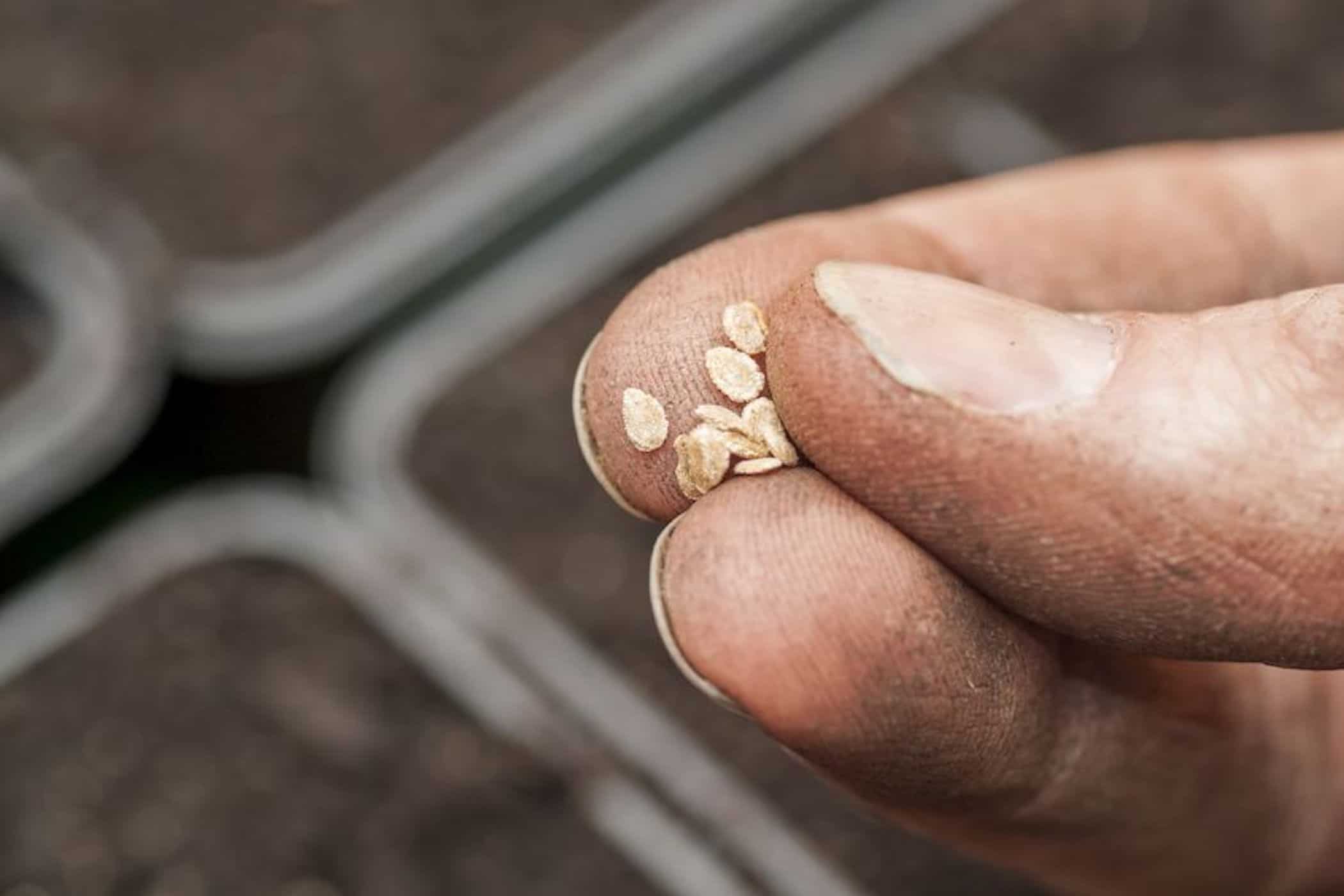
Tomato seeds are usually started indoors, not direct sown.
Direct Sowing: To plant seeds directly in the soil where the plant is to grow. Direct seeding is almost essential for plants that are grown for their root, like carrots, parsnips and beets, and is preferred for many vegetables that are easy to plant, like peas and beans, or can be difficult to transplant, like squash.
Seed Starting: To plant seeds somewhere other than the plant’s final growing location, with the intention to transplant the resultant seedling at an appropriate time. Seeds can be started under seed lights, in a greenhouse, near a window, or simply outside. They are typically started in flats, pots or other containers. Often, specialty seed starting mix is used. Seeds are started for a variety of reasons, including to grow vegetables that need a longer growing season than a gardener has, to ensure consistent spacing in the garden, to encourage higher germination rates from seed and more. (Read more: Seed Starting 101: A Step-by-Step Visual Guide to Growing Seedlings At Home)
Hardening Off: To gradually acclimate a seedling coming from a protected environment to ambient outside conditions before transplanting. For example, to expose a greenhouse-grown seedling to increasing hours of cooler temperatures and wind outside before finally transplanting it.
Transplanting: To move a plant from one location to another. Typically in vegetable gardening, this refers to removing a pot-grown seedling from it’s pot and planting it in its final location in the vegetable garden. However, any plant – including shrubs and trees – is a candidate for transplanting if you can dig it up and plant it somewhere else.
Potting Up (or Up Potting): To transplant a plant currently growing in one pot or container into another, larger pot. For example, if you start your tomato seeds early in the year, it may be necessary to up-pot your seedlings from 4-inch pots into gallon-size pots. (Read more: Seed Starting 101: Up-Potting)
Thinning: To pull, cut, or otherwise remove some seedlings from a planting in order to allow other seedlings to develop without crowding. Thinning can happen in the garden directly, as with carrots, or with plants that have been started in a pot. Most vegetables will not properly grow and mature without sufficient room for their type and cultivar. However, some vegetables which are harvestable at a range of sizes, including onions and beets, can be deliberately planted closer than their ideal final spacing and thinned when small. (Read more: The Importance of Thinning: How To Cull The Weak)
Short vs Tall: How They Develop and Grow

Tomato plants are often categorized as determinate or indeterminate.
Many common garden vegetables are bred to have both a compact or short-growing form and a leggy or tall-growing form. Generally, the compact form bears a crop earlier and in a briefer window. This is nice if you want lots of vegetables all at once for canning or preserving or if you have a very short growing season. The tall form usually starts bearing it’s crop later in the season, but will bear over a longer period, giving the gardener a supply of fresh vegetables over a longer harvesting period.
While this rule of thumb applies to vegetables like peas, beans, tomatoes and more, it’s not as accurate for crops like winter squash that only have one big harvest per season anyway, or cucumbers, which tend to be quite productive over a long harvest window even in their short or “bush” form.
Bush vs. Pole: This terminology typically applies to beans and peas. Bush legumes grow only several (2 to 4) feet tall, then set pods. They often do not require trellises but may still benefit from support. They have a brief but early and bountiful harvest window. Pole beans and peas can grow very tall, up to 8 or 10 feet depending on the cultivar. Pole legumes require trellising. They have a later but longer harvesting window.
Bush vs. Vining: This terminology typically applies to members of the squash family, including summer squash, winter squash and Cucumber. (Bush and vining can also describe tomatoes – see below.) Bush type squash have short vines and leaf stems, and tend to stay in a contained area without much pruning. If you’re attempting to grow squash in a large pot or container, choose a bush type. Vining or running type squash set fruit along long vines that will grow and branch as long as the plant lives. Vining types can rapidly cover a large area.
Determinate vs. Indeterminate: This terminology typically applies to tomatoes and, less commonly, potatoes. Determinate tomatoes (also called bush tomatoes) grow, flower and fruit according to a pre-determined (get it, determinates are already determined?) genetic pattern. Fruit sets and ripens in a fairly narrow window, and plants are generally compact with can typically be supported with just a cage. Pruning of determinate tomatoes should be limited, and focused on keeping foliage up off the ground. Indeterminate tomatoes (also called vining tomatoes) continue to grow as long as weather conditions allow, and set fruit all along their vines. Fruit ripens progressively, over a long window. For best results, indeterminate tomatoes need strong staking or other support and thoughtful pruning. Without pruning and training, indeterminate tomatoes tend to sucker and branch into a big tangle.
Certifications, Awards, etc.
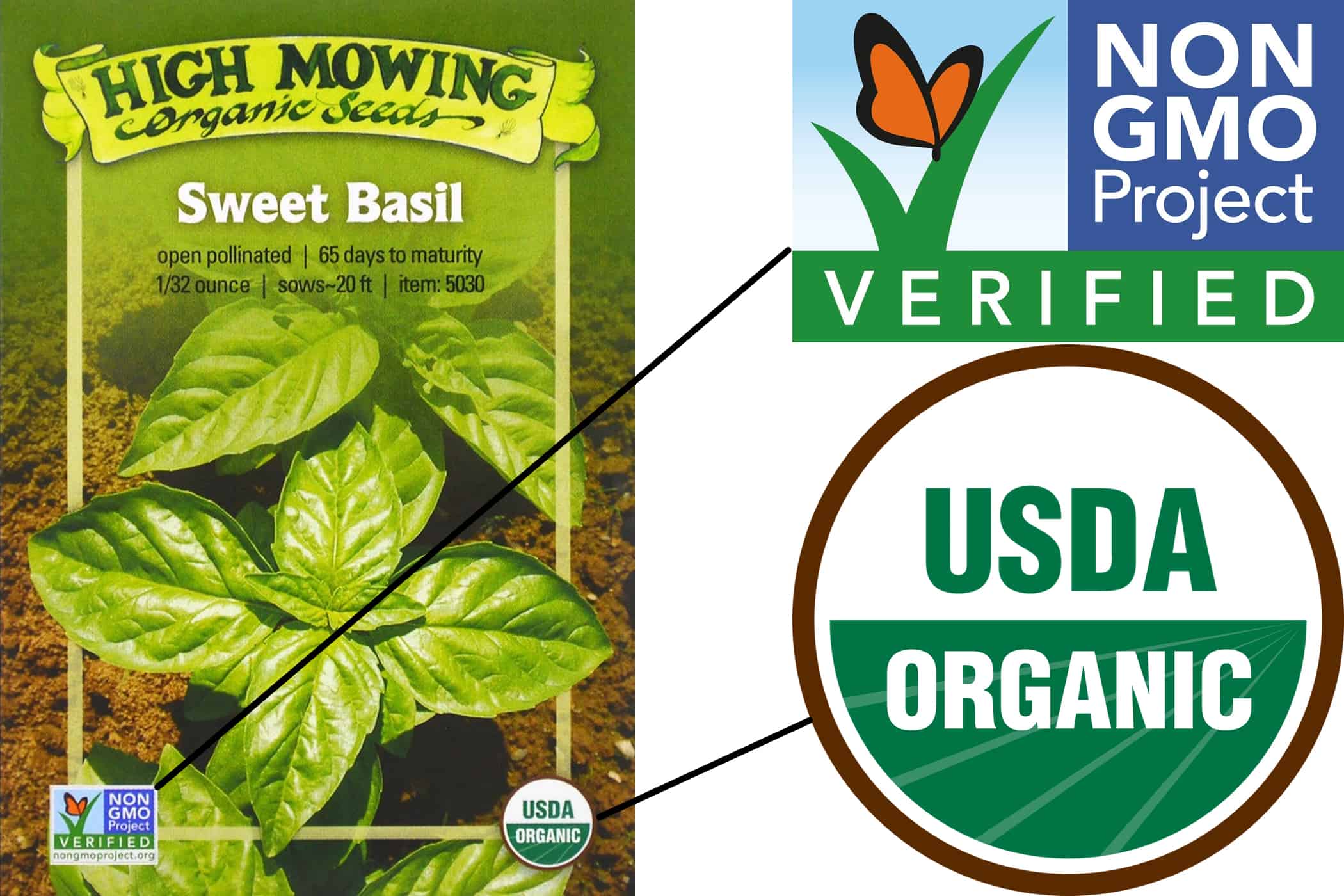
High Mowing advertises their Non GMO and Organic certifications.
Certified Organic: Seeds or plants grown according to specified standards which vary from country to country, but which typically prohibit the use of synthetic fertilizers and pesticides, sewage sludge and genetic modification. USDA organic standards also call for “minimal use of off-farm inputs and farm management practices that restore, maintain and enhance ecological harmony.” (National Organic Standards Board) Farms, products and organizations which meet these organic standards and choose to undergo the process of applying for certification are then certified by independent private or state certifying agents such as Washington State Department of Agriculture or Oregon Tilth.
Safe Seed Pledge: A pledge made by some seed companies to not knowingly buy, sell or trade in GMO seeds or plant material.
Non-GMO Verified: A company or product certified by the third-party organization Non-GMO Project to be free from ingredients, products, or components that are genetically modified.
AAS Winner: A variety was recognized by the independent non-profit, All American Selections. They recognize high quality flower and vegetable varieties, and a vegetable variety that is an AAS Winner is likely to be a high quality performer in your garden.
Anything you’d add to the list? Let me know in the comments!
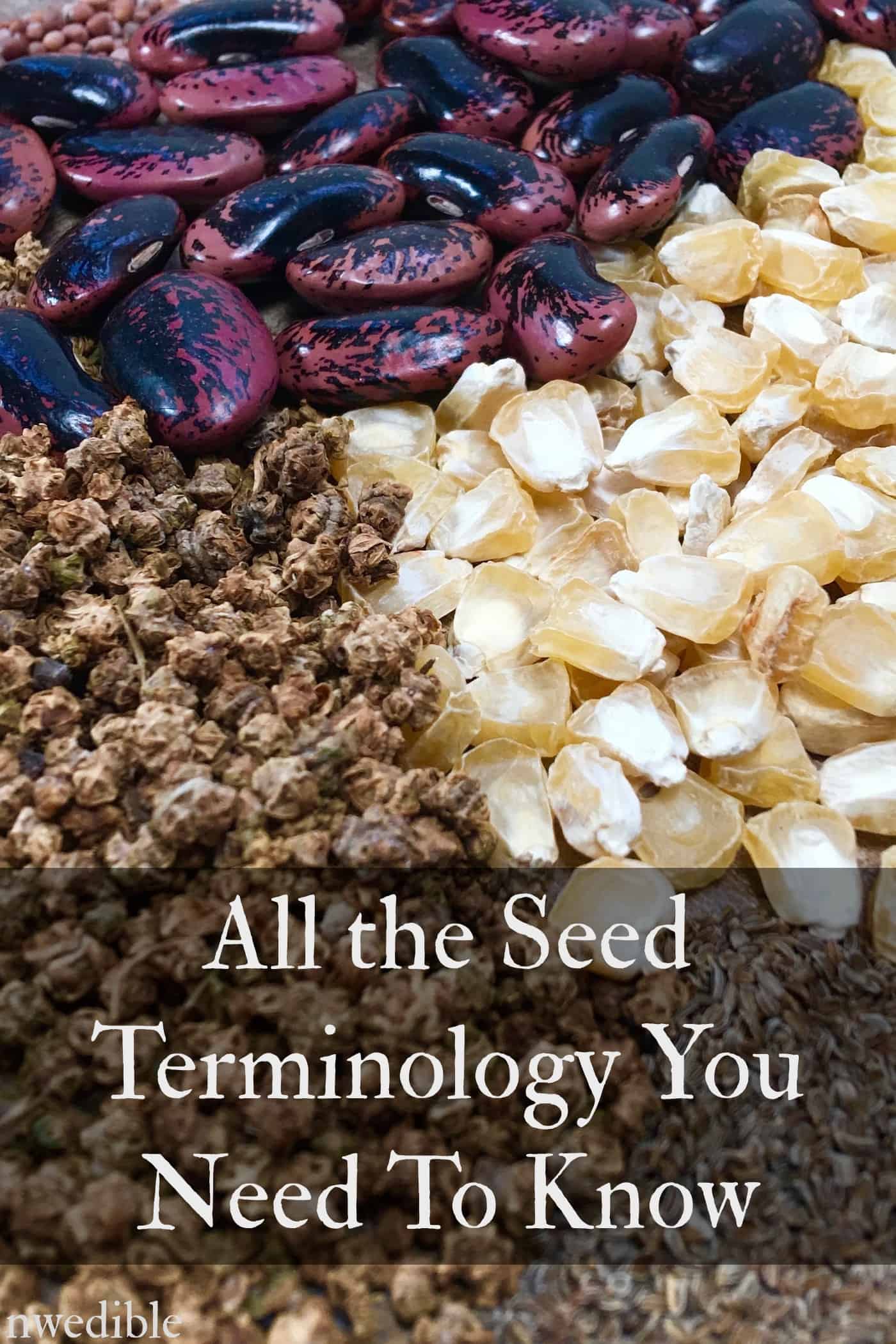
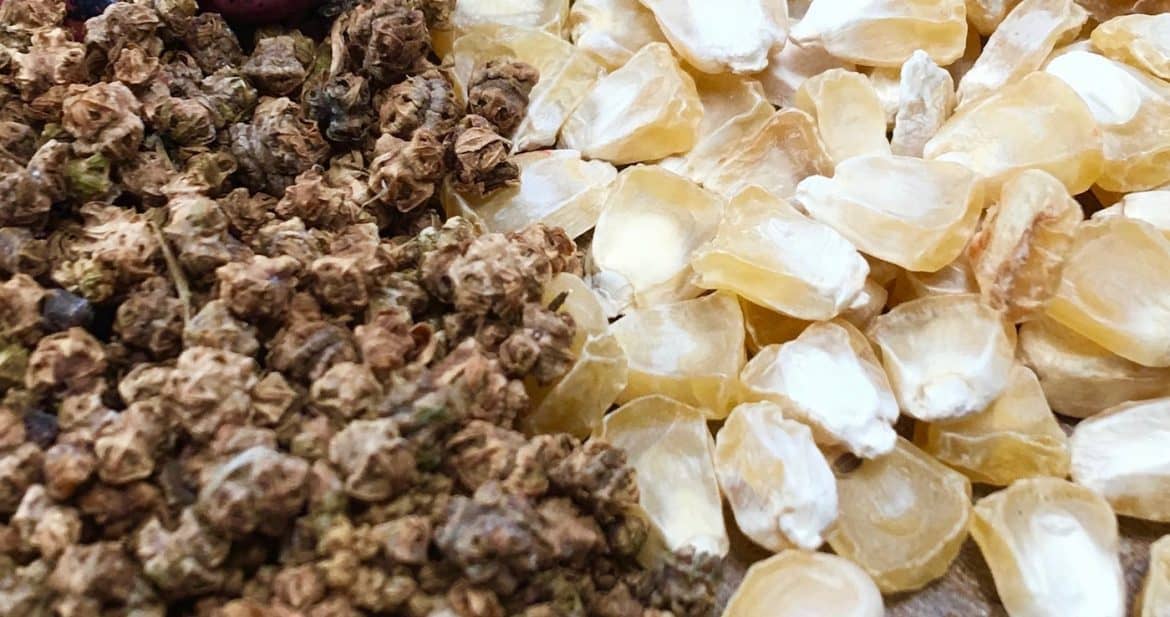
I have occasionally read that peppers will germinate faster if scarified but have not tried this myself.
They germinate quick enough for me so long as I keep them on a heat mat. Interesting about the scarification.
I LOVE the homestead calendar on the side. What a brilliant idea! Thanks for adding that. I see I’d better get on top of adding compost to the beds…pea planting weekend is coming quickly!
Glad you like it! Thanks Karen, make sure to adjust for your microclimate as needed. 😀
I measured that Summer Savory germinated 3:1 between seeds placed on top of the soil versus covered by 1/8″ soil. The test environment was indoors next to a large eastern facing window.
Thank you Ann! I’ve never grown summer savory, appreciate the info!
Wonderful article, but I got stopped in my tracks at the paragraph about the last frost date. Your coastal roots are showing! Late winter/ early spring, illustrated with Snowdrops? Are you kidding me? Out here in the relatively mild Kootenays night frost can still hit till late spring. Traditionally people planted the garden on the Victoria Day long weekend, the third Monday in May, and in a cold spring we may leave beans till early June. As for seed starting, those days are usually calculated in weeks before the last frost, not after!
Technically what I said was “in most locations, this is sometime in late winter or spring” which I think encompasses everything you’ve mentioned – certainly I consider spring to run through the end of May.
Some seeds, especially open-pollinated, certified organic seeds in some of my favorite seed catalogs now come labeled PVP or Utility Patent Granted. As I understand this, utility patents mean for the first time, it is completely illegal for me to save any seeds at all from the plants I grow. I am a seed saver and I represent a nonprofit, grassroots, seed conservation organization, The Rocky Mountain Seed Alliance. Seed patenting threatens what we do. I also see seeds now labeled with OSSI, for the Open Source Seed Initiative, a nonprofit group trying to offer an alternative to seed patenting. Maybe it is time for a new category: Seed Ownership Labels.